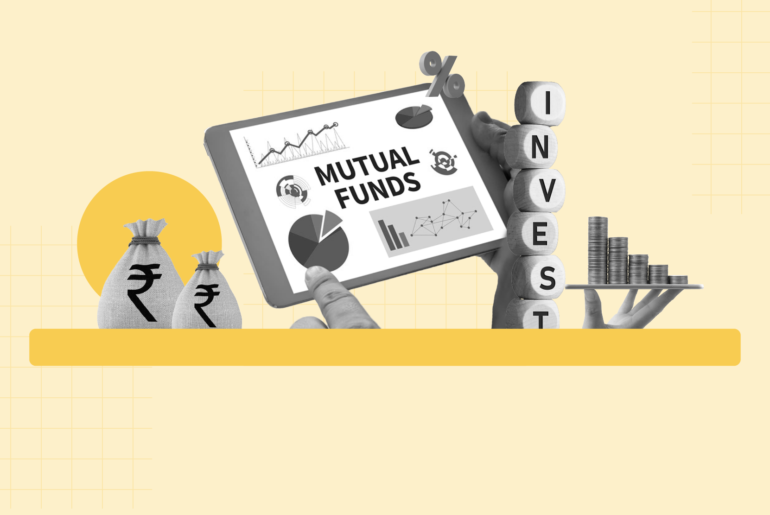Last Updated on Mar 17, 2025 by Aishika Banerjee
There are different types of mutual fund schemes with different risk-return profiles. Gilt funds are a type of mutual fund investment that are debt-oriented, thereby protecting your investments from market volatility. Let’s understand the concept of gilt funds in detail and find out the different aspects that they have.
This article covers:
- Gilt fund meaning – what are gilt funds?
- Features of gilt funds
- How do gilt funds work?
- Why invest in gilt funds?
- Who should invest in gilt funds?
- Things to keep in mind when investing in gilt funds
- Taxation of gilt funds
Table of Contents
Gilt fund meaning – what are gilt funds?
Gilt funds are debt mutual funds that invest at least 80% of their portfolio in government securities that have a fixed rate of interest. Gilt funds are open-ended mutual funds which means that you can invest in them anytime that you want to and also redeem the fund at your discretion.
Gilt funds are open-ended mutual funds that invest at least 80% of their portfolio in government securities having a fixed rate of interest. Click To Tweet
Features of gilt funds
After looking at gilt fund meaning, let’s look at the salient features of gilt funds. Here are the notable ones:
- You can find two types of gilt funds. The first is one wherein government securities of varying maturities are bought by the fund manager. The second one is where the portfolio consists of securities with the same maturity period, usually 10 yrs or 15 yrs. So, if you are looking at 10-yr gilt funds, it means that at least 80% of the portfolio is invested in government securities with a maturity of 10 yrs.
- Gilt funds have very low credit risk since the government always fulfils its obligation to pay back the amount borrowed.
- The fund is not exposed to any volatility risk since government securities have a fixed rate of return.
- You can invest either a lump sum amount or choose the SIP route of investment when investing in gilt funds.
How do gilt funds work?
Whenever the government needs funds for its operations, it asks RBI to help generate the required funds. RBI issues bonds and securities, backed by the government, to institutional investors like banks and mutual funds.
An Asset Management Company (AMC) that issues gilt funds, pools money from investors looking to invest in government securities. Thereafter, at least 80% of the pooled corpus is invested in the government securities that are issued by the RBI. The securities pay interest that adds to the value of the portfolio and generates returns for the investors.
Why invest in gilt funds?
Now that you understand what gilt funds meaning is, you would spot the benefits that these funds have to offer. These benefits include the following.
- Investment in government securities: government bonds and securities issued by the RBI are not available for retail investors. So, if you want to invest in such securities which have a low to minimal risk, you need to invest through gilt mutual funds.
- Attractive returns: government securities promise good interest income. As such, gilt funds can offer attractive returns on your investment and help you create a corpus for your financial goals.
- Low exposure to risk: Being debt-oriented, gilt funds are not prone to the volatility of the equity market. As such, in uncertain times, when the equity market is volatile, gilt funds can offer good returns. Moreover, the credit risk is also low considering these funds are issued by the government where the risk of default is non-existential.
- Protection of invested capital: The money that you invest in gilt funds does not erode due to market volatility. With a low-risk profile, gilt funds protect your invested capital against value erosion.
- Indexation benefit on long term capital gains: If you redeem the fund after 3 yrs, you get the benefit of indexation on the profit earned on redemption. This indexation benefit factors in inflation and reduces your taxable income thereby giving you tax-effective returns.
Who should invest in gilt funds?
When understanding what gilt funds are, you should also understand whether such funds fit your investment strategy or not. Gilt funds are suitable for your portfolio if you:
- Have a low appetite for risk
- Want exposure in government securities
- Want to diversify your portfolio for stability
Having a long-term perspective is beneficial if you want to invest in gilt funds since such funds can offer a good yield-to-maturity.
So, assess your investment needs if you are choosing to invest in gilt funds and then invest in suitable funds.
Things to keep in mind when investing in gilt funds
Here are a few points that you should keep in mind if you are choosing to invest in gilt funds:
Inherent interest rate risk
Though gilt funds have minimal credit and volatility risk, they are still exposed to interest rate risks. If the interest rate of fixed-income investments rises, government securities would become less attractive since they would have a lower rate. This would cause a drop in the NAV of the fund.
Returns
In a bullish market, returns on equity would outperform those on gilt funds. The returns from gilt funds are attractive in a bear market when equity is suffering a fall. Moreover, if the interest rates in the economy are falling, gilt funds would offer higher returns and vice-versa.
Gilt funds perform better than equity in a bear market. They also yield higher returns when the interest rates in the economy are falling. Click To TweetExpense ratio
Like other mutual fund schemes, gilt funds also have an expense ratio associated with them. This ratio reduces the effective returns and so, you should look for funds that have a low expense ratio for maximum returns.
Investment horizon
Government securities are issued with a medium to long term tenure. As such, if you are investing in gilt funds, an investment horizon of three yrs and up is recommended.
Taxation of gilt funds
Being debt mutual funds, gilt funds are subject to debt taxation. Returns earned from gilt funds are taxed in the following manner:
- Returns earned within 36 mth of investment in the fund are called short-term capital gains. Such gains are added to your taxable income and taxed at your income tax slab rate.
- Returns earned after 36 mth of investment are called long-term capital gains. Such gains are taxed at 20% with the benefit of indexation.
Summing it up
Gilt funds are mutual funds that invest primarily in government securities. They have a low-risk profile and give stable returns. When investing, understand gilt funds’ meaning and then invest in suitable funds to diversify your portfolio with exposure to quality government securities.
- Top Large Cap Funds 2025: Discover Blue Chip Performers - Mar 27, 2025
- Gilt Funds in India: Features, Meaning, and Advantages - Mar 13, 2025
- Best Index Funds in India 2025: Top Performing Mutual Funds - Mar 13, 2025




